Innovation in Focus: Heartfelt Research
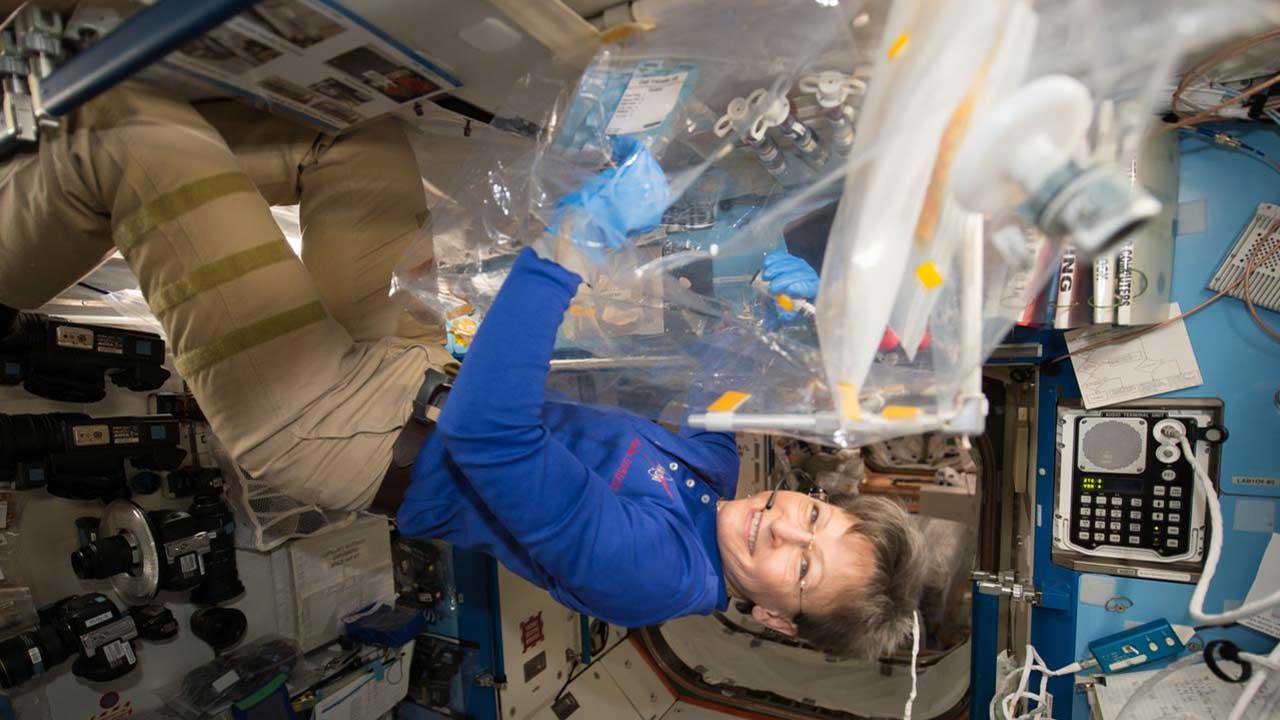
NASA astronaut Peggy Whitson is photographed performing an investigation that uses the microgravity environment of space to examine how stem cells differentiate into specialized heart cells.
Media Credit: NASA
February 15, 2025 • By Kris Rainey, Staff Writer
February 14th is Valentine’s Day, a holiday filled with hearts on everything from cards to candy boxes and even pizza. But did you know that February is also American Heart Month, an annual recognition of the importance of heart health and a time to raise awareness about heart disease, the leading cause of death in the United States. Heart-related research on the International Space Station (ISSInternational Space Station) has been taking place for a while now, with the ISS National Lab sponsoring several cardiac research projects.
Research conducted in space offers a different perspective when it comes to studying heart conditions, as extended exposure to microgravityThe condition of perceived weightlessness created when an object is in free fall, for example when an object is in orbital motion. Microgravity alters many observable phenomena within the physical and life sciences, allowing scientists to study things in ways not possible on Earth. The International Space Station provides access to a persistent microgravity environment. can deteriorate heart muscle cells and tissue much faster than aging or heart disease on Earth. Spaceflight also induces many changes in heart cells that could be beneficial in developing cell-based regenerative therapies. The ISS National Lab provides a valuable platform for cutting-edge cardiac research, bringing solutions closer for patients with heart disease on Earth.
Enjoy heart images of a different kind this Valentine’s Day in this photo essay focused on the importance of cardiac research in space to benefit humanity.
Beating Heart Cells in Microgravity
In 2016, researchers from Stanford University used human induced pluripotent stem cells (iPSCs) to grow heart muscle cells, or cardiomyocytes, in space. This was the first study on the space station to focus on heart function at the cellular level. NASA astronaut Kate Rubins shares her experience working on this pioneering research onboard the orbiting laboratory.
Stem Cells, Space, and the Human Heart
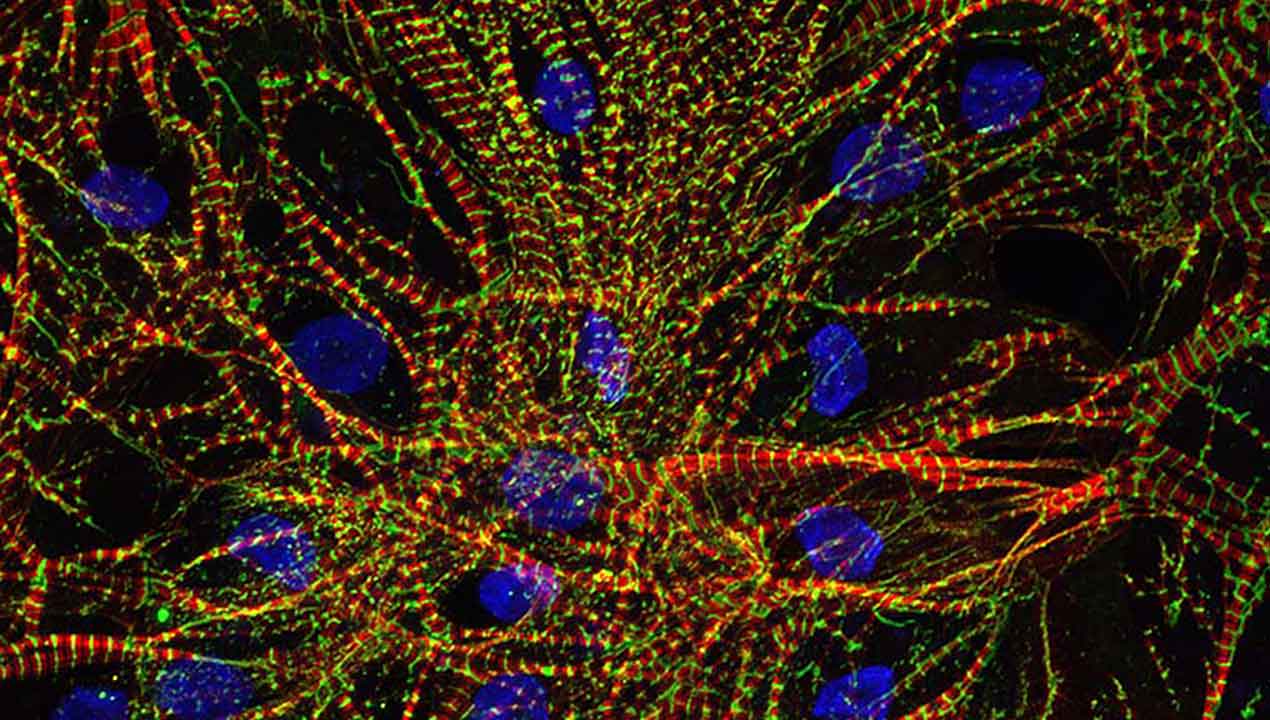
An image of heart cells grown in microgravity onboard the ISS.
Media Credit: Stanford University
Initial findings from the Stanford team’s research were published in the journal Stem Cell Reports. The results showed that iPSC-derived cardiomyocytes are a reliable model to study heart function in microgravity and laid the groundwork for further space-based stem cell research.
Getting to the Heart of the Matter
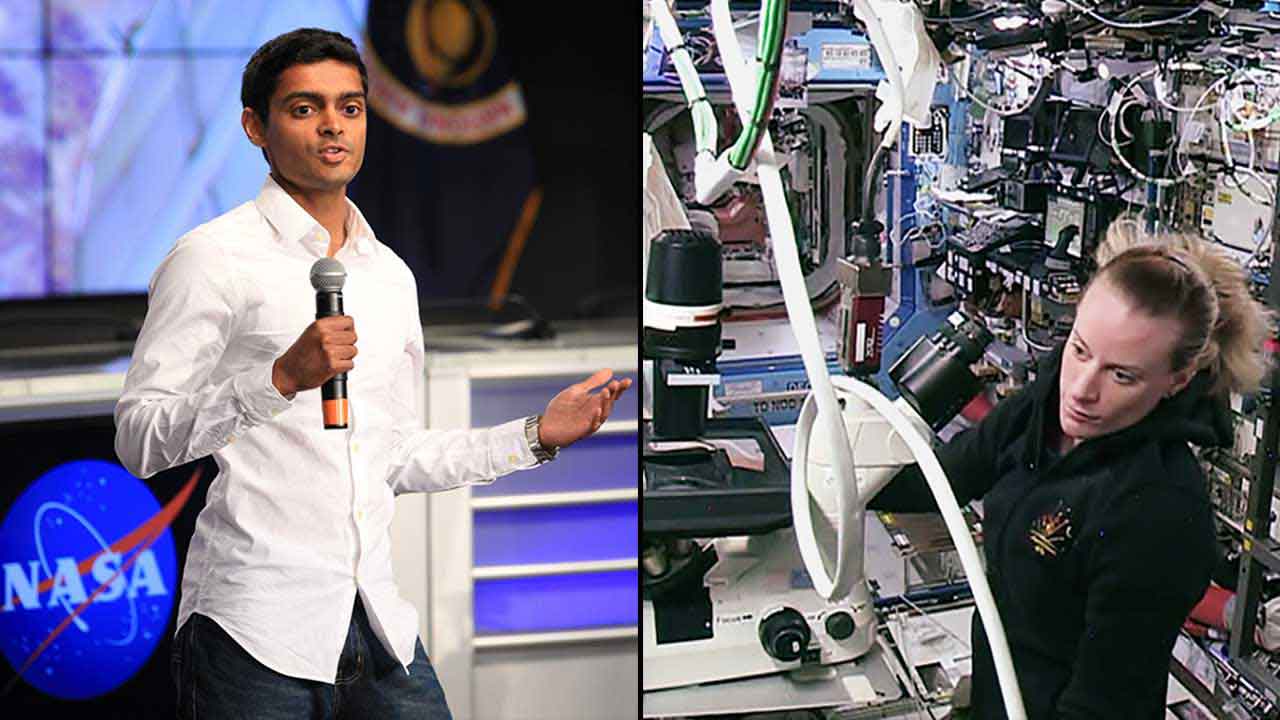
Left: Arun Sharma speaking at the SpaceX CRS-9 NASANational Aeronautics and Space Administration science briefing Right: NASA astronaut Kate Rubins sets up a new microscope onboard the ISS for cardiac research
Media Credit: NASA
Why study heart cells in space? This Q&A delves into how analyzing the effects of microgravity on heart cells could one day lead to the ability to replace a failing heart by producing a new one in the lab.
Cardiac Tissue Chips in Space

Media Credit: NASA
To enhance patient care and quality of life for individuals with heart disease, Stanford University researchers conducted a follow-on ISS National Lab-sponsored project to see whether engineered heart muscle tissue in microgravity could serve as a model for heart failure to test new drug candidates.
Powerful Preflight Discoveries
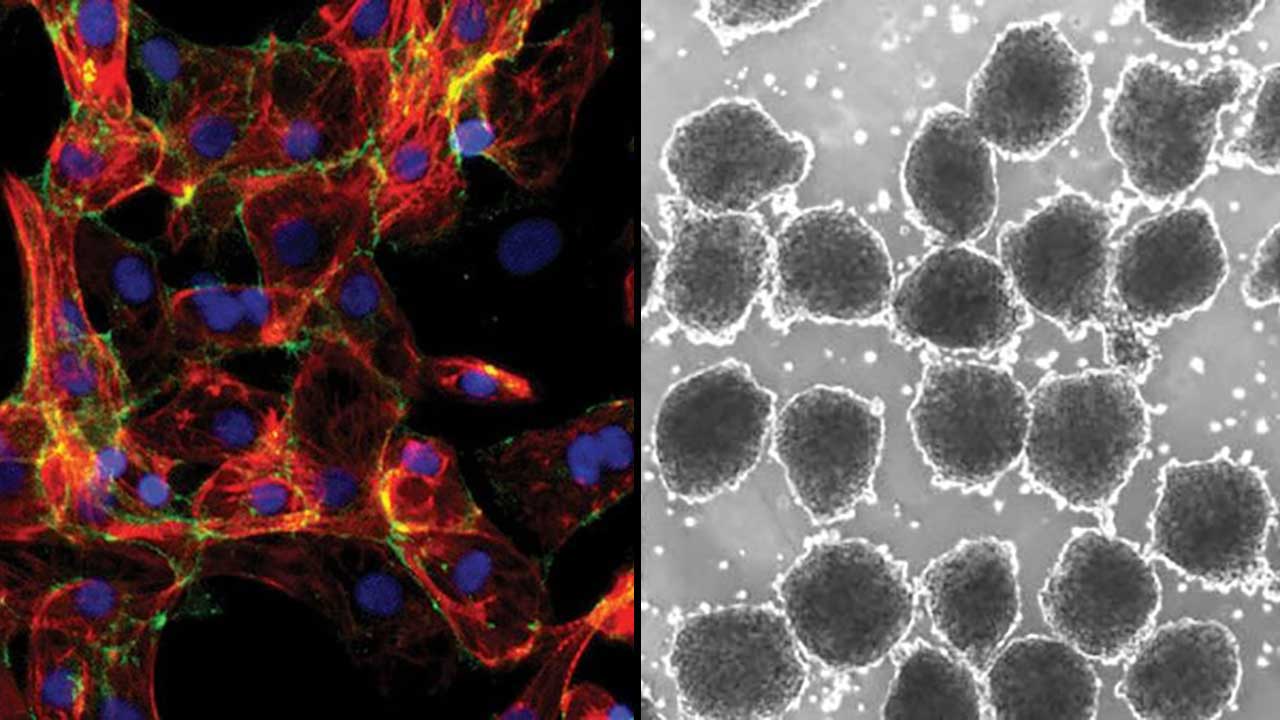
Left: Microscopic image of cardiomyocytes derived from human pluripotent stem cells Right: Microscopic image of cardiac progenitor spheres generated by tissue engineering
Media Credit: Xu Lab
Sometimes, researchers uncover exciting discoveries even before their space-bound experiments take off. Read more on a preflight discovery from Emory University researchers that could help significantly improve heart disease treatments.
It Takes More Than a Rocket
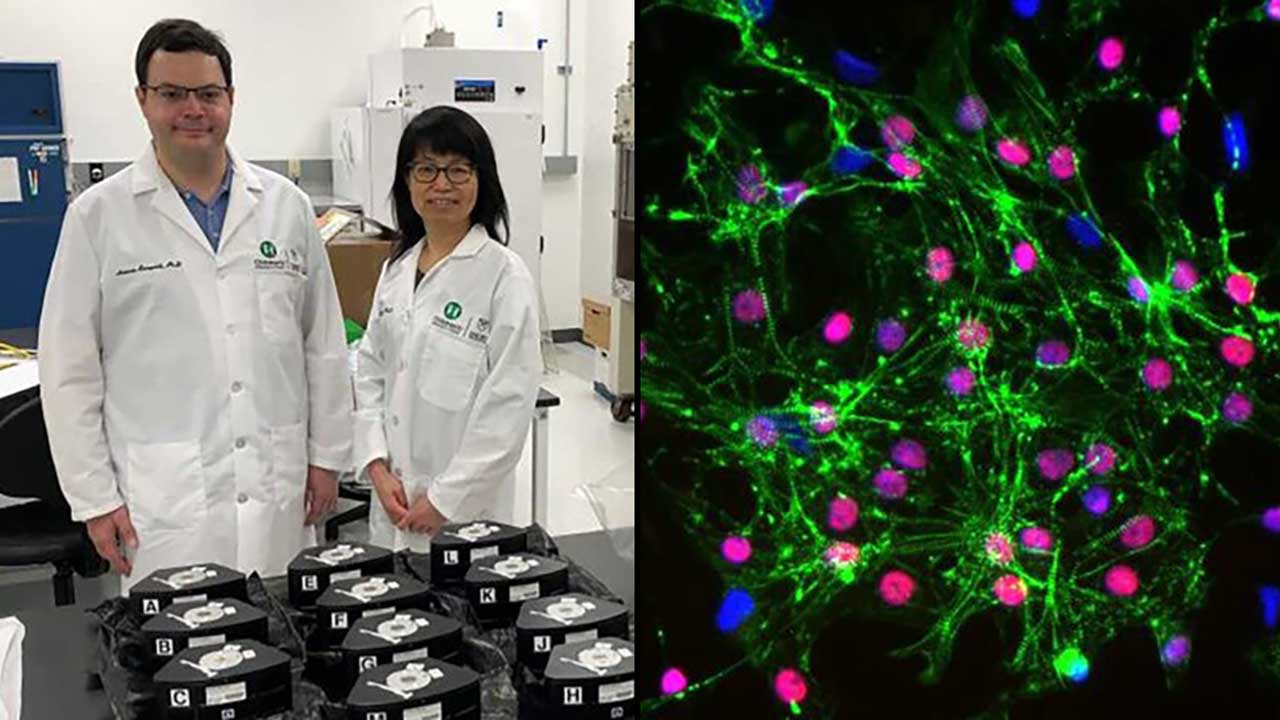
(Left) Emory University's Chunhui Xu and postdoctoral fellow Antonio Rampoldi: (Right) Detection of cardiac structural proteins (stained green) and cardiac transcription factor (stained red) in cells following cryopreservation and carbon dioxide-independent culture. The nuclei are stained blue.
Media Credit: Cardiomyocyte Stem Cell Laboratory, Emory University School of Medicine
While microgravity holds potential for breakthroughs that could aid patients with heart conditions on Earth, researchers discovered that conducting experiments in space involves more than just sending stem cells on a rocket into low Earth orbit(Abbreviation: LEO) The orbit around the Earth that extends up to an altitude of 2,000 km (1,200 miles) from Earth’s surface. The International Space Station’s orbit is in LEO, at an altitude of approximately 250 miles.. Culturing stem cells in space—as well as the challenges of sending them to station and back—can make space-based stem cell research difficult. However, the Emory research team developed a detailed cryopreservation method that makes the process much easier.
Engineered Cardiac Tissue

Heart cells derived from human stem cells stained for muscle protein (green) and nuclei (blue).
Media Credit: Parvin Forghani, PhD, Emory University
Building on their previous research, the Emory researchers conducted a follow-on investigation to study how microgravity influences the growth and function of heart muscle cells as they develop into tissue-like structures. The findings will enhance heart disease modeling and could lead to new therapies for treating patients on Earth.
Mending a Broken Heart

A Loma Linda University research team conducted an ISS National Lab-sponsored investigation to study microgravity’s effects on cardiovascular progenitor cells (CPCs), immature heart cells that can be developed into several different types of cardiovascular cells. The team found that microgravity causes changes in CPCs that could be beneficial for developing regenerative therapies to repair damaged heart tissue back on Earth.